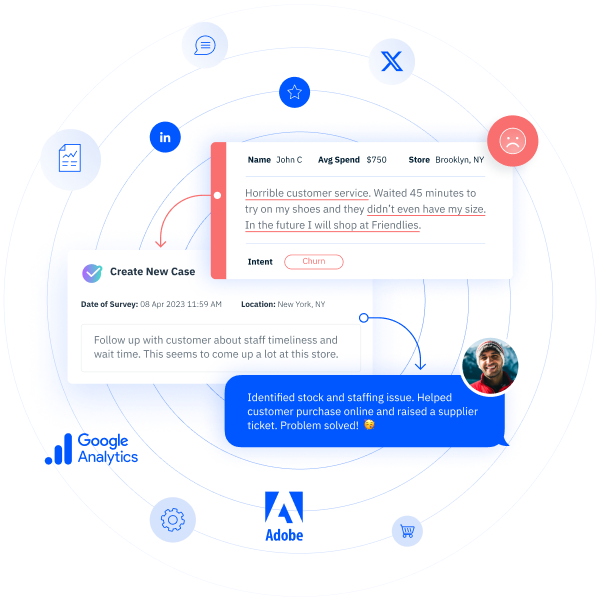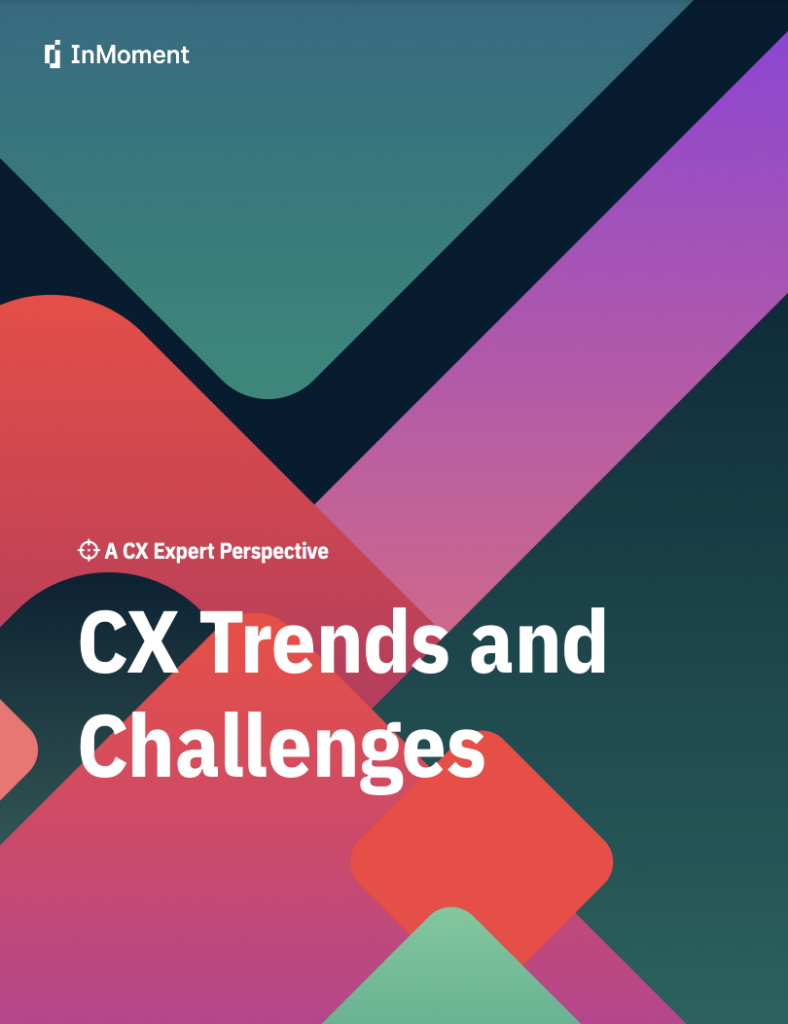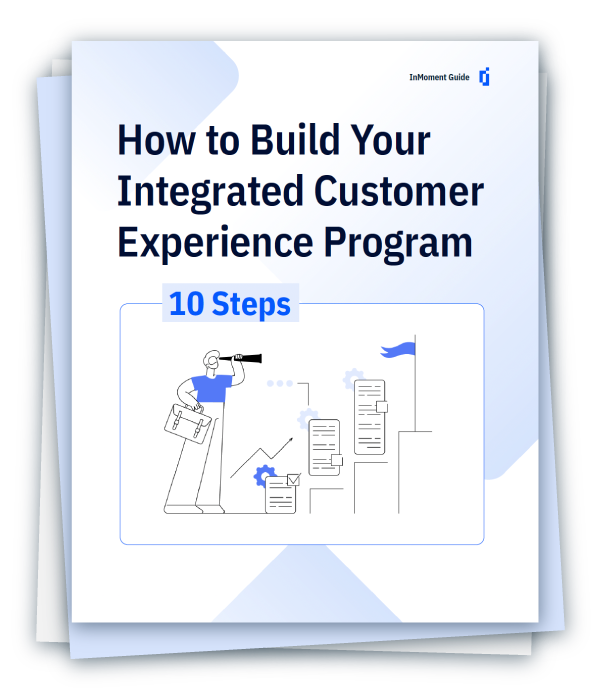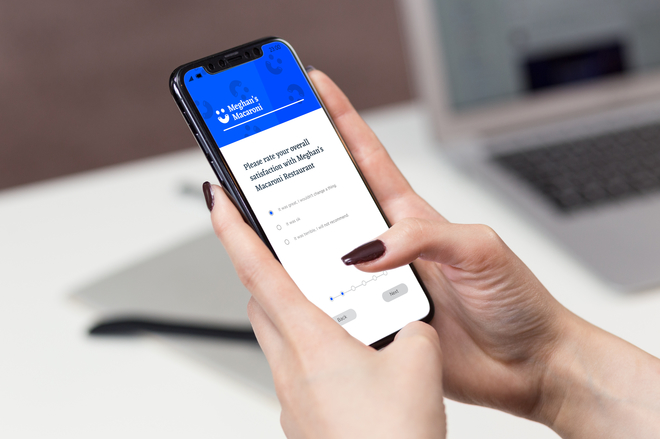
It’s been a huge month for those of us in the InMoment Community! We’re always looking for the next opportunity to take Experience Improvement (and the experience industry as whole) to the next level, and this month, we made three major InMoment announcements that tell the world about the next steps in our mission: InMoment’s acquisition of ReviewTrackers, InMoment being named a leader in “The Forrester Wave™: People-Oriented Text Analytics Platforms, Q2 2022,” and, finally, the launch of the latest XI Platform capabilities.
Want to know more about these headlines? We’ve put together a quick guide to help you navigate the three latest InMoment announcements and what they mean for you. Keep reading to get the 411!
Your Guide to the Three Latest InMoment Announcements
Announcement #1: InMoment Acquires Leading Customer Review Management Company ReviewTrackers
The InMoment family just keeps growing! Our latest addition, ReviewTrackers, empowers over 175,000+ business locations to better understand and manage their customer reviews across 100+ sites with their review management technology.
InMoment and ReviewTrackers joining forces is great news for today’s brands! Online reviews are a great source of unsolicited customer feedback, and they often offer perspective from a different segment of the customer base than surveys or other feedback channels. The combination of different sources for voice-of-customer provides a more holistic, integrated view of the customer experience, and therefore a more accurate representation of the broader customer experience.
Leveraging InMoment AI, an intelligence layer of the XI Platform that utilizes natural language processing (NLP), natural language understanding (NLU) and machine learning (ML) to facilitate and automate action, this unstructured data is brought to life.
Now, more than ever, it’s vital to monitor, manage, and respond to online reviews from customers in order to accelerate new customer acquisition and improve customer retention—all while driving more authentic connections with customers. This acquisition empowers InMoment customers to do just that!
Announcement #2: InMoment Named a Leader in People-Oriented Text Analytics Platforms Report for Q2, 2022
Our next InMoment announcement covers a report by third-party analyst, Forrester, entitled “The Forrester Wave™: People-Oriented Text Analytics Platforms, Q2, 2022.” Forrester Research, Inc. evaluated 13 of the most significant text analytics vendors across 29 evaluation criteria, and named InMoment along with only four other vendors as a Leader in the evaluation.
In its vendor profile of InMoment, Forrester states that the company’s acquisitions of MaritzCX in 2020 and Lexalytics in 2021 are “…paying off—the acquisitions beef up InMoment’s people-oriented text analytics capabilities and enable it to address all relevant use cases (beyond just VOC or CX analytics).” The report states “InMoment XI is a solid choice for customers who want a platform with a well-balanced mix of knowledge and ML-based AI, the ability to deploy OOTB solutions quickly, and deep custom application development capabilities (especially for embedded analytics).”
“We are pleased to be named a Leader in Forrester’s People-Oriented Text Analytics Platforms report,” says Mehul Nagrani, General Manager, AI Product & Technology. “It validates for us our approach to providing an integrated platform with deep expertise in analyzing both structured and unstructured data, and reflects the hard work of the team to integrate key Lexalytics text analytics and machine learning technology into our product portfolio. We are committed to delivering AI-based technology to further our ambition of helping businesses improve experiences for their employees and customers.”
Announcement #3: The Latest Updates to the Award-Winning XI Platform
We couldn’t be more excited about this InMoment announcement: the launch of the latest set of technology innovations on our market-leading XI Platform! With these additions and updates, organizations will be empowered to acquire new customers, retain and increase loyalty of existing customers, and drive improved business performance—all within one seamlessly integrated platform.
Want to know what’s new? Here’s a quick roundup:
- Product Experience Cloud™: An experience ecosystem built to help product managers, developers, and UX designers understand friction points that need to be addressed while also providing perspective to customer experience teams on how product interaction impacts the larger customer experience.
- Data Exploration™: The industry’s first search-based text analytics solution that explores unstructured data from any source for a single integrated view of experiences based on key themes, underlying sentiment, relative customer effort, intent and emotion so businesses can explore feedback and take action faster.
- Spotlight™: An award-winning, sophisticated AI-based and natural language processing (NLP) power-user application for real-time automated insights discovery from all types of customer experience signals to improve customer and employee acquisition or customer recovery and retention.
- Moments™: InMoment’s real-time mobile app, built to socialize experience feedback through a curated data feed which can be displayed on your phone or tablet, or through monitor displays in an office environment to help teams drive improvement on the go by sharing feedback, adding experiences to a collection of like comments, and closing the feedback loop to grow stronger customer relationships.
In addition, enhancements have been made to existing XI applications to better facilitate inclusion, intelligent decision making, and sophisticated data workflows, all leveraging industry-leading AI. They include:
- Survey: The industry’s first WCAG 2.0 compliant feedback collection solution that uses a proprietary enhanced method, allowing businesses to efficiently integrate data workflows reducing errors and ultimately cost.
- Reporting: Expert-designed industry and role-specific dashboards for the front line, CX teams, and C Level stakeholders that deliver an aggregate view of what’s happening by program, across regions, and through locations with flexible data views that unearth key business drivers.
- Workflow: Automating the most time-consuming part of data analytics processing, Workflow seamlessly segments and drives automated action on your customer base within the XI Platform and triggers events in existing enterprise systems such as Slack, Hubspot, Marketo, Salesforce etc.
- InMoment AI: Underpinning all XI applications is industry-leading InMoment AI, an intelligence engine powering both structured and unstructured analytics across the platform. InMoment AI combines advanced Machine Learning algorithms with industry specific taxonomies, near-universal language support and encapsulated vertical knowledge to deliver rich insights, predictive analytics, and actionable recommendations through the XI application ecosystem.
Realizing the InMoment Mission
Improving experiences is why InMoment exists. Our mission is to help our clients improve experiences at the intersection of value—where customer, employee, and business needs come together. These latest InMoment announcements are our next steps in realizing that mission. We can’t wait for the road ahead!















